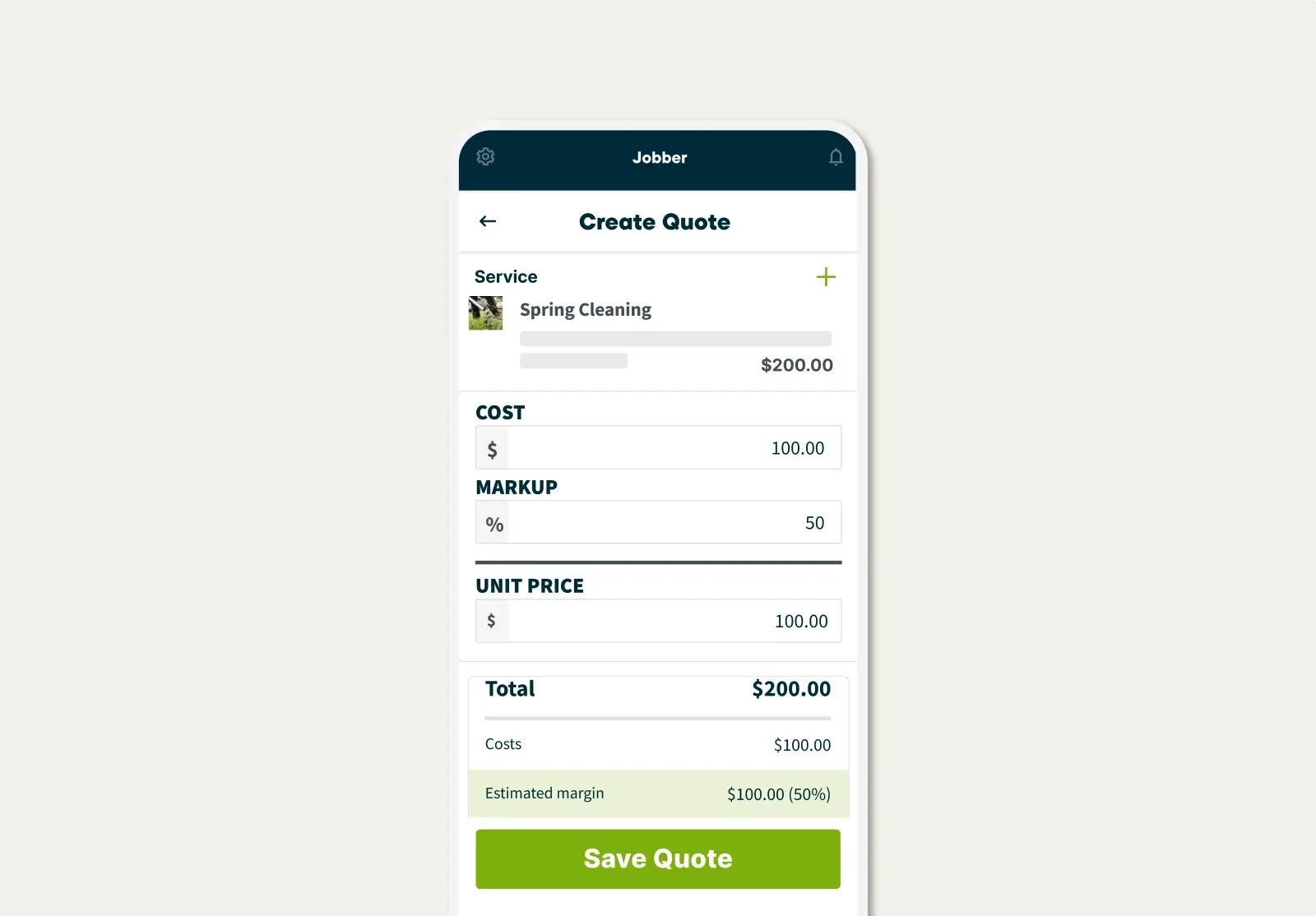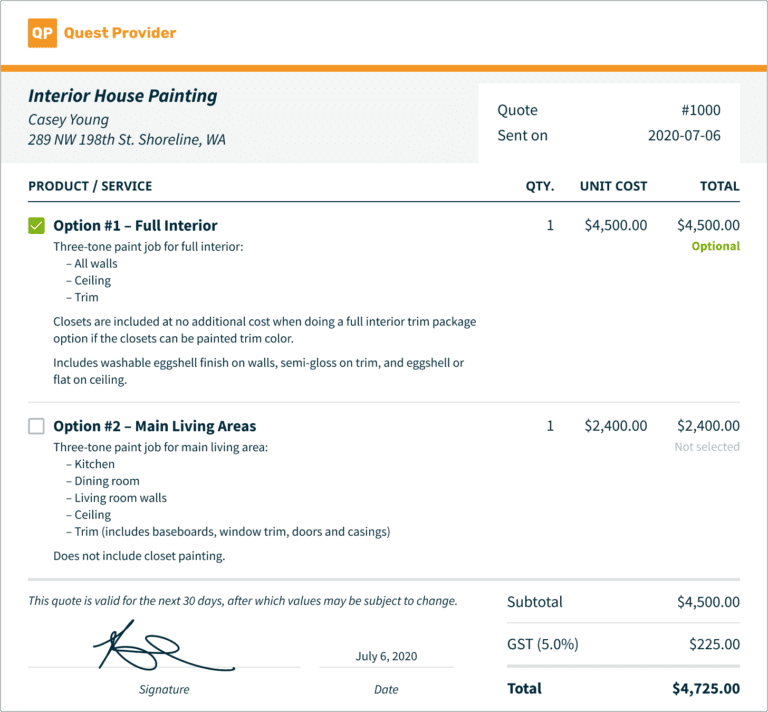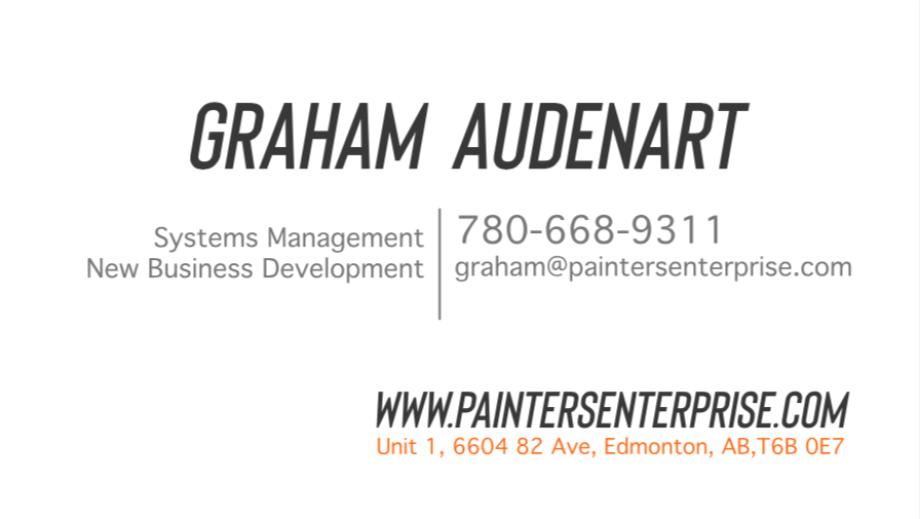How to Start a Painting Business With Expert Advice from Painters Enterprise
Starting a painting business the right way can help you get more customers, turn a profit, and do what you love for a living.
Take it from Graham Audenart, founder of Painters Enterprise, who’s helped thousands of homeowners since starting his company in 2003.
With some of Graham’s advice, we’ll walk you through how to get started in the painting industry and build the foundation for a successful painting business.
Here’s how to start your own painting business in 9 steps:
-
Learn professional house painting skills
-
Register your business
-
Get painting business insurance
-
Set up a business bank account
-
Decide which types of painting services to offer
- Choose your painting equipment
-
Learn how to price your services for profit
-
Get your first painting customers
-
Hire subcontractors or employees
1. Learn professional house painting skills
Learning how to paint professionally can save you from making mistakes that cost you money and clients. Before you get your first job, here are some professional house painting skills that all painters should know:
- Proper scraping, patching, and sanding techniques to prep a room for painting
- Basic painting techniques to get an even coat and avoid touch-ups
- How to use brushes and rollers
- How to cut in paint
- How to use different kinds of paints (oil based, latex, acrylic, etc.)
- When to use primer (for most interior painting jobs except touch-ups and refreshes)
- The best way to paint rooms (from top to bottom)
Getting hands-on experience is the best way to learn. Many painting contractors start by working for a painting company for one or two years. This experience can also give you insight into the industry and how to start a painting business of your own.
You have to know at least the basics. Just go work for someone for two or three years. Learn everything you possibly can.
You can also learn tons of stuff from the internet… but you still need to get hands-on experience before starting.
2. Register your business
Once you’ve chosen a unique painting company name, you’re ready to complete the paperwork you need to run your business legally.
First, decide what business structure you want to register your business as. These are the typical options for small businesses:
- Sole proprietorship — You run your operations alone and want complete control over your business.
- Partnership — You’re opening your painting business with two or more people who are still legally considered self-employed.
- Limited liability company (LLC) — You run a medium or high-risk business, and you want to protect yourself from personal liability.
READ MORE: Should I incorporate my small business?
Then you’ll need to register your company name. This process is different depending on where you live:
- United States: As long as nobody else in your state is using your painting company name, you can trademark it and register your domain name.
- Canada: If it’s the same as your personal name, you don’t need to register your business name. Otherwise, register the trade name and trademark it to protect your brand.
- United Kingdom: Choose whether you’re a sole trader or business partnership, check your name availability, search for a trademark, and register your company name and business.
- Australia: If your business isn’t using your personal name, you’ll need to register your business name through the Business Registration Service, ASIC, or a private service provider.
Pro Tip: Type “YOUR CITY NAME + business laws” into Google to find your local regulations for painting businesses.
Get a business license
A business license is what legally allows you to run your business. You need a license to operate your business—no exceptions.
The specific kind of license you need will vary from state to state, so contact your local Chamber of Commerce or the Small Business Administration (SBA) to find out what you need.
Licensing and registration can cost between $75 and $400 USD per year, depending on your region. You’ll need to display your business license in your office or when asked to provide proof of registration.
3. Get painting business insurance
Painting insurance protects you, your business, and your future employees from losses caused by injury, property damage, or other unexpected incidents.
There are different types of insurance you can choose from, depending on the coverage you need:
- General liability insurance covers you financially if someone is injured on the job site or a customer’s property is damaged.
- Commercial property insurance protects you in the event your office, storage space, or painting equipment is damaged.
- Commercial auto insurance covers your company vehicle in case of collision or other damage.
- Workers’ compensation protects your business if an employee is injured on the job.
Or, opt for a business owner’s policy that packages insurance for small business owners. This type of policy typically includes general liability, commercial property, and business income insurance.
Insurance is your safety net, and it’s an essential part of running your painting business. Shop around for the right insurance plan for your small business and check out various providers in your area.
4. Set up a business bank account
Open a business bank account and get a business credit card to keep your business’s finances and assets separate from your personal ones. This is the first step to easier bookkeeping, and it’s a requirement if you decide to incorporate your business.
Then use small business accounting software like QuickBooks Online to track expenses, run payroll, and keep your business’s finances organized.
Pro Tip: Use Jobber’s QuickBooks Online integration to manage your accounting in the same place you schedule and manage your work.

5. Decide which types of painting services to offer
Choosing what services you want to offer will help hone your skills, focus your marketing strategy and save you from promising work that you’re not prepared to do.
Here are some types of painting services you might offer:
- Interior painting
- Exterior painting
- Construction painting
- Repaints
- Staining
- Drywall repairs
- Wallpaper removal
- Metal door painting
- Deck reconditioning
- Pressure washing or power washing
The painting services you offer should depend on what you want to do, what you’re good at, and what your clients need.
Difference between residential and commercial clients
When choosing your services, start by deciding whether you want to work with residential or commercial painting customers. Residential and commercial jobs will affect your business plan and bottom of line in different ways:
- Residential painting clients are easier to book and the jobs are simpler, but it’s less likely you’ll get recurring work. You’ll have to work hard on getting a big client list to stay profitable.
- Commercial painting clients are more likely to give you recurring work and more profitable projects, but cash flow is much slower. You’ll need to pay more for people, expenses, and materials—and you’ll get paid less frequently.
Once you have your first clients, figure out what they typically want and focus on those service offerings. If you have a client who asks for specific paint services that you don’t offer, you can always subcontract that out.
6. Choose your painting equipment
Painting equipment can be expensive, so start by investing in the essentials and build your inventory of equipment over time.
If you’re a house painter, you’ll need the following painting supplies:
- A few brushes of different sizes
- Roller
- Paint tray
- Drop cloths
- Sandpaper
- Painter’s tape
- Scrapers
- Ladder and a caulking gun (for exterior paint jobs)
You can rent advanced tools, like paint sprayers, when you actually need them. Those can cost over $500 to purchase and eat into your other important startup costs.
For commercial painting jobs, you’ll absolutely need:
- A ladder
- Canvas drop cloths
- Caulk and compound
- Sandpaper and scrapers
- Industrial primer
- A pressure washer
- A tape measure
- Stir sticks
- An extension pole
- Edging tools
Graham recommends always keeping your paint tools with you, and not borrowing supplies from your clients, or the painters you’re working with.
“As soon as you find yourself in a situation where you need a specific tool, go out and get the tool. You need proper tools to get the job done properly!”
READ MORE: Painting equipment list: 50 must-have tools for professional painters
Invest in painting business software
In addition to painting equipment, you’ll need painting contractor software to help keep you organized and to control your entire operations in one place.
Here what you can do with Jobber’s painting software:
- Quickly create professional estimates that include suggested add-ons or optional packages. Jobber helps you set the right price every time with quote markups.

- Add painting jobs to your schedule quickly. Jobber lets you visualize your visits for the day and automatically generate most fuel efficient routes.

- Manage customer details, work orders, and communication—from the office or on the go. Jobber makes it easy to keep track of the information you need, like room measurements or paint colors, to complete jobs smoothly.

- Instantly convert a painting job into a professional invoice that’s ready to send to clients. Then set up automated payment reminders to get paid faster and improve your cash flow.

7. Learn how to price your services for profit
You need to estimate your painting jobs properly to keep your small business profitable. To accurately price your painting services:
- Visit the client’s home or building and inspect the conditions of the space
- Estimate how many hours it will take you to complete the job
- Multiply the time by the cost of labor
- Add your materials, overhead costs, and your desired profit margin
- Use software to total the estimate and send your client a copy of the quote
READ MORE: How to estimate and quote a painting job
Quoting software like Jobber lets you create customer-friendly quotes in minutes. Suggest optional services (like wallpaper removal or drywall repair) directly on your quote and automate your follow-ups to keep work moving forward.

When customers are ready, they can approve or request changes to their quote online in client hub, their self-serve portal.

8. Get your first painting customers
The first step to marketing your painting business is establishing a brand and an online presence. These make your business easy for a potential customer to find.
Try these three marketing strategies to reach new customers fast:
Brand your painting business
Your brand is how the public sees your business. It’s the look and personality of your company, and it should hint at what sets you apart from your competitors. To build your brand:
- Know your value proposition. What makes your painting company different? It could be your main client base (e.g., senior citizens, clients who work night shifts), your values (e.g., being eco-friendly), or a personality trait you’re proud of. Write a short, memorable line that summarizes that.
- Create a logo and choose your company colors. Try an online logo generator like Looka to make something simple and easy to read. Your logo and colors should reflect what makes your business unique.
- Get a dedicated business phone number and email address. There are free email options available, or you can use a custom name after the ‘@’ symbol if you’ve purchased a domain name for your website.
- Choose a uniform. This helps you (and your team) represent your company when you’re on the job. You could order t-shirts with your name and logo, or even pants, hats, or face masks that match your brand colors.
- Make branded business cards and vehicle decals that include your logo, company name, phone number, website, and email address.
Build an online presence
Most of your future clients are looking for businesses online. Setting up your online presence helps potential customers easily find your business on the internet and contact you for your services.
Here are a few simple ways to build an online presence:
- Create a Facebook business page and share before-and-after photos, client reviews, and discounts on services
- Create profiles on Instagram and LinkedIn
- Claim your Google Business Profile listing
- Make a simple website (using online website builders like Wix or Squarespace)
- Create listings on online directories like Yelp, Houzz, HomeAdvisor, or Angi
READ MORE: How to build an online presence for your business: 4 low-cost steps

Advertise your painting services
With a brand-new business, you need to work extra hard to find clients who’ll hire you. Here are some of the best low-cost marketing strategies for new painting businesses:
- Create tear-away flyers and pin them to community bulletin boards
- Start a referral program and reward clients for spreading the word about your business
- Pass out business cards with your contact information at your local grocery store
- Join pay-per-lead online marketplaces like Porch or Thumbtack
- Run Google’s Local Services Ads to appear on Google when people search painters in your area
- Join networking groups, like Business Network International (BNI) or home service entrepreneur groups on Facebook
READ MORE: 3 painting flyer examples and templates to get more leads
Here’s a look at what Graham Audenart of Painters Enterprise includes on his business cards:

I try to get my guys to do a lot of one-to-one networking in the field.
We review our invoices and quotes each month, and we track where they come from. A lot of clients come from BNI. That’s why we focus our advertising and marketing there.
9. Hire subcontractors or employees
Subcontractors are great for projects that require specific skill sets, while employees are great for on-going, long term projects.
Hiring painting subcontractors has helped Graham complete more work, take on bigger jobs, open more locations. You can rely on subcontractors to supply all their own materials, which is one less expense and responsibility to worry about.
We need to get jobs done fast and well. Our regular subcontractors are able to finish some jobs in five hours for about $500 for the day.
Pro Tip: Make sure you’ve read your local subcontracting laws before you start hiring a subcontractor.
Employees, on the other hand, will stay with you on a consistent, permanent basis—so you have a team you can train and grow with. You’ll have to budget for each painter’s salary as well as employee benefits, training, and additional paint tools.
READ MORE: Subcontractors vs. employees: a complete overview
Running a painting business and doing what you love is going to be extremely rewarding. You’re taking a big step—but if you make a careful business plan for your service offerings, estimating, advertising, and hiring, you’ll build a business that succeeds and grows.
Come back to this guide when you need help, and check out our painting business resources for more advice.
Originally published in September 2019. Last updated on December 19th. 2023.
